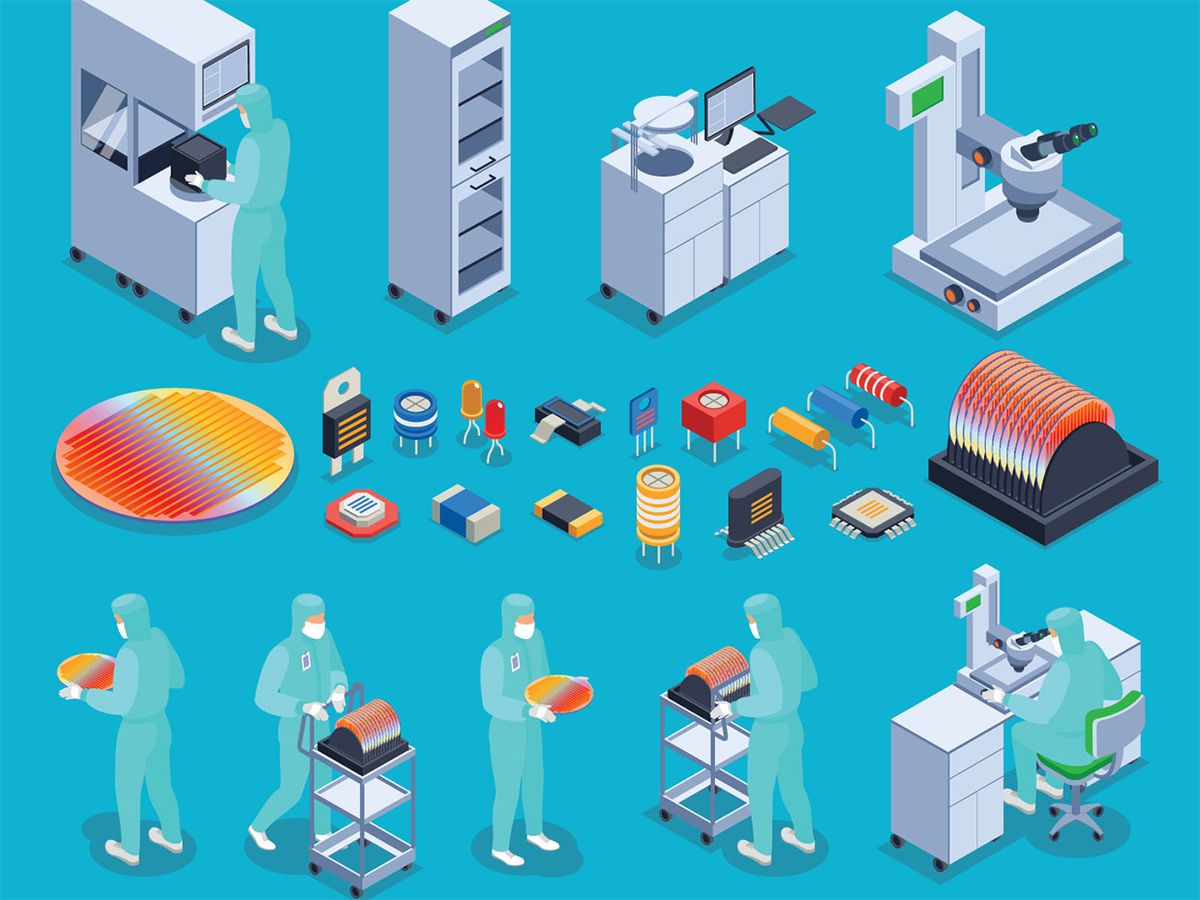THE INSTITUTE There’s a lot of excitement in the power industry about devices made with wide bandgap (WBG) semiconductors such as silicon carbide (SiC) and gallium nitride (GaN).
The materials’ bandgaps—the energy difference between insulating and conducting states—are significantly greater than that of silicon. As a result, WBG power devices use less energy, can handle higher voltages, can operate at higher temperatures and frequencies, and can produce more reliable forms of electricity from renewable energy. But their technology is also fairly new, and the devices cost more than silicon-based ones, which have a proven track record.
To encourage the use of WBG technology, the IEEE Power Electronics Society (PELS) recently released the International Technology Roadmap for Wide Bandgap Power Semiconductors (ITRW).
“The road map is a strategic look at the long-term landscape of WBG, its future, what the trends are, and what the possibilities are,” says IEEE Fellow Braham Ferreira, chair of the ITRW steering committee. “The purpose of the document is to facilitate an acceleration in the R&D process to fulfill the potential this new technology has.”
The road map committee is divided into working groups that focus on four areas: substrates and devices, modules and packaging, GaN systems and applications, and SiC systems and applications. Experts from around the world are participating, including materials scientists and engineers, device specialists and researchers, policymakers, and representatives from industry and academia.
The road map identifies key trends, design challenges, and potential applications as well as a preview of future applications.
“We could not give marching orders for industry on the production and development of these devices,” Ferreira says. “By consensus and agreement, we identified what the potential new applications could be, and gave direction for investment in long-term R&D.”
BENEFITS APLENTY
There are several reasons for using WBG semiconductors for power electronics and other applications, according to the ITRW executive summary. SiC and GaN devices are becoming more affordable and widely available. They also offer performance that can’t be achieved with silicon.
The new generation of WBG semiconductor devices made from SiC and GaN power converters have the potential to switch 100 to 1,000 times faster than their silicon counterparts.
They also can save a lot of energy, Ferreira says: “With a typical silicon converter, you get about 95 percent efficiency. But using a WBG converter, the efficiency is closer to 99 percent.”
The road map summary lists the markets that could benefit most from the adoption of WBG technology, including ones for photovoltaic converters, hybrid and pure electric automotive drivetrains, and data centers.
The road map authors also foresee clear benefits for the technology in radiation-hardened electronic equipment used in space and other places where a lot of radiation is present, Ferreira says.
Markets that can benefit from WBG’s smaller converters and reduced losses and noise are power supplies for computers, laptops, televisions, and electric vehicles.
WHAT’S INSIDE
The road map identifies short- (5 years), mid- (5 to 15 years) and long-term time frames for commercialization. Short-term indicators are given for existing products and devices. The mid-term section explains what it would take for specific technologies to turn a profit. Longer-term trends highlight research that could lead to new devices.
Several case studies are included. One looks at integrated switching cells for modular wide-bandgap conversion. Another considers high-voltage packages for silicon carbide MOSFETs.
PELS members can download the road map for free. The cost is US $50 for other IEEE members and $250 for nonmembers.
The society also offers webinars about WBG semiconductors.
Kathy Pretz is editor in chief for The Institute, which covers all aspects of IEEE, its members, and the technology they're involved in. She has a bachelor's degree in applied communication from Rider University, in Lawrenceville, N.J., and holds a master's degree in corporate and public communication from Monmouth University, in West Long Branch, N.J.



